| Umělec magazine 2002/4 >> Live Art - Art of Living? | List of all editions. | ||||||||||||
|
|||||||||||||
Live Art - Art of Living?Umělec magazine 2002/401.04.2002 Jan Suk | theme | en cs |
|||||||||||||
|
“Usually when I say the word live art to people who don’t know what that means, you get some kind of smartass comment: ‘So is the other art dead then?’ And when I look at most kinds of mainstream performing artists in Britain, my answer is: Yes, it is.”
Lois Keidan What is Live Art? Live Art is the tendency to fight against all definitions of traditional forms, and, like all contemporary artistic practices, it is difficult to define the resulting phenomenon. “To be very very simplistic,” Lois Keidan of Live Art Development Agency (LADA) explains, “Live Art is a way of mapping a new performance culture that respects no limits and understands no borders.” Live Art is not an artistic form, but rather a theoretical umbrella that covers a whole range of process-based art practices. Thus Live Art is not a label; it is an attitude or approach to contemporary art. Its existence suggests that questions such as, Is it art? or Is it theatre? are unnecessary, or even wrong. Live Art can be read as a hybrid offspring of Performance Art of the 1960s and 70s, and a shift in the nature of experimental theater in the 1970s and 80s. The artist’s body is at the center of attention, as is already apparent in Beuys, Stelarc, Burden, Abramović, and the tradition of the Viennese Aktionists. Live Art concerns artists whose work is preoccupied with the idea, or concept, rather than the final product or its form. Art should be provocative and questioning, rather than decorative and authoritative. In their work Live Artists focus on the presence rather than the consequence. The artists share a certain interdisciplinary approach; their artistic practices are at the edge of dance, video, visual art or digital media. The need to frame all these modern works is related to the notion that contemporary art is incomprehensible in terms of classical understanding. By coining out a new terminology new art can thus be more easily supported. The flourishing of Live Art in the past few years is the result of the tireless activity of a number of individuals and institutions, of which LADA is the finest example. Meeting LADA The center of London’s contemporary Performance Art can now be found on Brick Lane in East London. It’s no coincidence that LADA’s office is only a few yards from the renowned Whitechapel Art Gallery and is a close neighbor of Artsadmin, another powerful contemporary art support office. Around the corner dwell the living sculptures Gilbert&George, where they have been for over three decades. “You haven’t met them yet?” asks Lois in surprise. “They walk down the street and perform every day, and once you have met them two, three times they start to say ‘Hi’.” Brick Lane has become very “in” in recent years, filling itself with independent galleries, pubs, restaurants, cafés, clubs, graffiti, secondhand fashion and other trendy junk. With only two employees, LADA looks like a small family business. Both Daniel Brine and Lois Keidan act as curators, advisors, brokers, lobbyists and, above all, open people. In fact, their office really is a family business; but for all that, they are people who are trying to break the rules in order to say something new. LADA’s strategy is to reconfigure society’s understanding of the artist’s role. Lois argues that mainstream art suffers from the “disneyfication of difference” syndrome, which means that if something does not fit into the vision of the mighty, it is bought to fit it into the mighty vision (if I got it right). Something they are fighting to avoid. When she speaks about her work, which she does only when she is not working, she becomes extremely animated and swears profusely: Art should challenge the thought of normality and identity, in order to make us reconsider our perception of others and ourselves. The office of London LADA is a multipurpose venue. It provides practical information and advice and offers opportunities for dialogue, debate, research and training. Accidental visitors may browse shelves of performance-related books or, if lucky, they can watch some of the Live Art videotapes in the archive. Live Art in Higher Education is a program supported by LADA that encourages relationships between institutions and practising artists, offers information and research materials to student groups and individuals, and supports the professional development of performance students and graduates from British schools. They also collaborate with artists on running workshops in Higher Education. LADA also offers something called One to One Bursaries — a fund for the support of artists to enhance their process-based work. This means that a winning British-based artist is awarded a sum of money they are free to use in any way. Once the money is received, LADA does not check up on how the money is being spent. This creates a mutually friendly and free atmosphere, and regular collaboration with the winning artist typically follows. Among other activities — such as publication of the annual magazine Live Art and the research journal Live Art Letters (both published by The Live Art Archive Office in Nottingham, a Live Art office linked with Nottingham Trent University) — the LADA offices also organize the series of artist led forums and events called Small Talks. LADA has been invited to select the platform artists for the National Review of Live Art this February and March. And, finally, just to stress the crucial role LADA plays in the contemporary British art landscape, Lois Keidan and Daniel Brine curate a major event called Live Culture at Tate Modern. Live Culture Live Culture is a four-day program of events that considers the shifting nature of Live Art practice in relation to the visual arts. It brings together distinguished artists, theorists and curators to examine the expansion of performance art across broader artistic and social arenas and looks at its role in relation to cultural change. Live Culture consists of a series of special performances, an international symposium, personal overviews and contextualizing presentations held in Tate Modern (27-30 March 2003). The program should stress art’s status of “liveness” as a prime object and value in the media-dense environment of contemporary culture. At the same time it should make Live Culture a timely and critical intervention into current discourse. This event’s role is to become a temporal site for expressions of new identities beyond the distinctions of ethnicity, gender and sexuality: the ultimate goal of the entire Live Art strategy. The choice of participants accords with the aim to pinpoint Live Art tendencies. Live performances will include works by artists such as: Oleg Kulig, Franko B, Guillermo Gomez-Pena, La Ribot, Forced Entertainment, Hayley Newman and others. Live shows will be accompanied by screenings, an international symposium and lectures given by prominent Performance Art practitioners and theoreticians, including Marina Abramović, RoseLee Goldberg and Yu Yeon Kim. Live Culture was preceded by the publication of Exposures, a book in which the photographer Manuel Vason maps Live Artists by asking them to stage a series of pictures about themselves and their art. The book does not document the art itself, but rather “exposes” the artists and their art in what they believe is a characteristics of their work. The artists were also asked to write about their art. This approach creates a surprisingly true view of each participating artist. The book therefore comes across not as a documentary, but rather a mirror of the contemporary state and the life of contemporary Live Artists Lois Keidan also curated Small Acts at the Millennium, a performance series (in conjunction with Mental Health Action Week) of events of a personal character, where the rather intimate actions of nearly 20 contemporary British artists stand in opposition to the world-embracing gestures of the “official” millennium art in Britain. For instance, Mike Pearson took spectators to the village where he was born, showed them various places and told stories from his childhood. Bobby Baker — strapped to the back of a flat bed truck — drove around Trafalgar Square and central London shouting at the world through a megaphone to “Pull Yourself Together!” However the main goal of Live Art Development Agency is to bring together people who are trying to say something and offer them support. For a closer look at some of these artists, see below article “Live Artists — Living Artists.” For now this attempt to document Live Art should not close without allowing for a touch of Live Artness, so at least permit me to omit the final Major publications: Manuel Vason, Lois Keidan, Ron Athey, Exposures, Black Dog Publishing, London 2002 RoseLee Goldberg, Performance, Live Art since 1960, Thames and Hudson, London 1998 Georg Schimmel, Out of Actions, Thames and Hudson, London Nicky Childs, Jeni Walwin, A Split Second of Paradise, Live Art, Installation and Performance, River Oram Press, London 2001 Adrian Heathfield, Small Acts: Performance, The Millennium and the Marking of Time Franko B, Oh Lover Boy, Black Dog Publishing, London, 2001 www.liveartlondon.demon.co.uk Live Culture will be followed by in 2004 by Live: Art, Performance and the Contemporary a major publication produced in collaboration with Tate Publishing. www.tate.org.uk
01.04.2002
Recommended articles
|
|||||||||||||
|
04.02.2020 10:17
Letošní 50. ročník Art Basel přilákal celkem 93 000 návštěvníků a sběratelů z 80 zemí světa. 290 prémiových galerií představilo umělecká díla od počátku 20. století až po současnost. Hlavní sektor přehlídky, tradičně v prvním patře výstavního prostoru, představil 232 předních galerií z celého světa nabízející umění nejvyšší kvality. Veletrh ukázal vzestupný trend prodeje prostřednictvím galerií jak soukromým sbírkám, tak i institucím. Kromě hlavního veletrhu stály za návštěvu i ty přidružené: Volta, Liste a Photo Basel, k tomu doprovodné programy a výstavy v místních institucích, které kvalitou daleko přesahují hranice města tj. Kunsthalle Basel, Kunstmuseum, Tinguely muzeum nebo Fondation Beyeler.
|







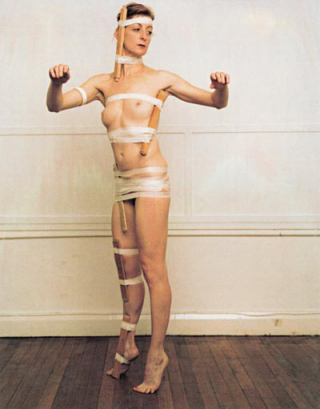














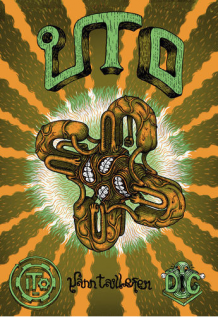




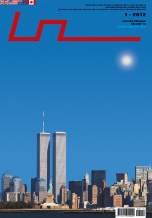
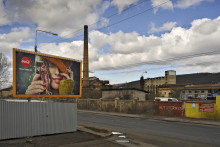
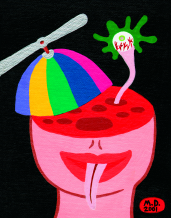
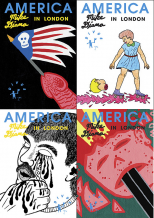


 New book by I.M.Jirous in English at our online bookshop.
New book by I.M.Jirous in English at our online bookshop.
Comments
There are currently no comments.Add new comment